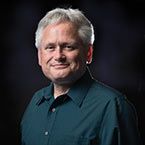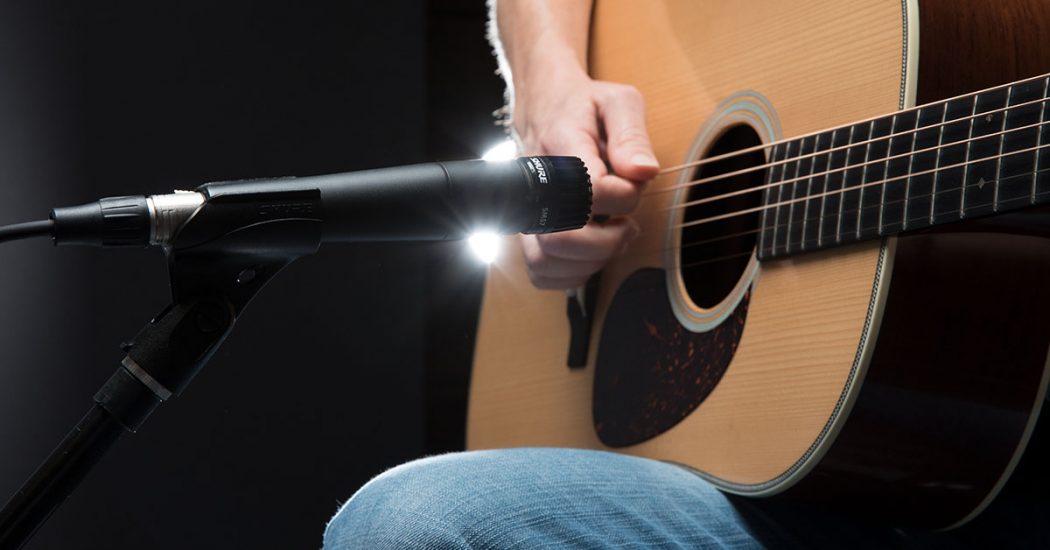
Richard Chycki
(Rush, Dream Theater, Aerosmith, Alice Cooper, Skillet)

Acoustic guitar is such an expressive instrument, and miking it to capture all of the nuances is incredibly satisfying. I have a few methods of recording acoustic guitar that I’m happy to share. Let me preface this by saying that the importance of having a well-maintained guitar that is played well can’t be overstated.
My first method is using a small-diaphragm condenser into a Neve preamp or an Earthworks SR40 into either a Manley Force or a Tube-Tech MP2A. I’ll put the mic about a foot away from the neck pointing toward the 12th fret but tilted about 30 degrees back toward the headstock. This gives nice transients, and the tilt points the mic to capture the low end from the soundhole without becoming boomy. Positioning and experimentation is important to find the sweet spot. If I need it, I may add a U47, a Mojave MA-1000, or a Telefunken ELA M 251 over the soundhole going into a Neve preamp, EQ out excessive boom, and then mix the two mics together. That subgroup would typically feed either a Teletronix (Universal Audio) LA-2A or maybe a Universal Audio 1176 if I want to be more apparent with my compression. I take the compressor output straight to my DAW.
On Rush’s Snakes & Arrows album, we were looking for a breathing, organic, and wide guitar tone for the song “Hope.” In a fairly dry recording environment, Al Lifeson sat with a pair of omni-patterned Earthworks mics about 6′ apart and 6′ away from him — an equilateral triangle. A Royer R-121 was placed close to the body to fill in the bottom end a touch, as needed. I used clean preamps for all mics. No EQ or compression when tracking, straight to DAW.
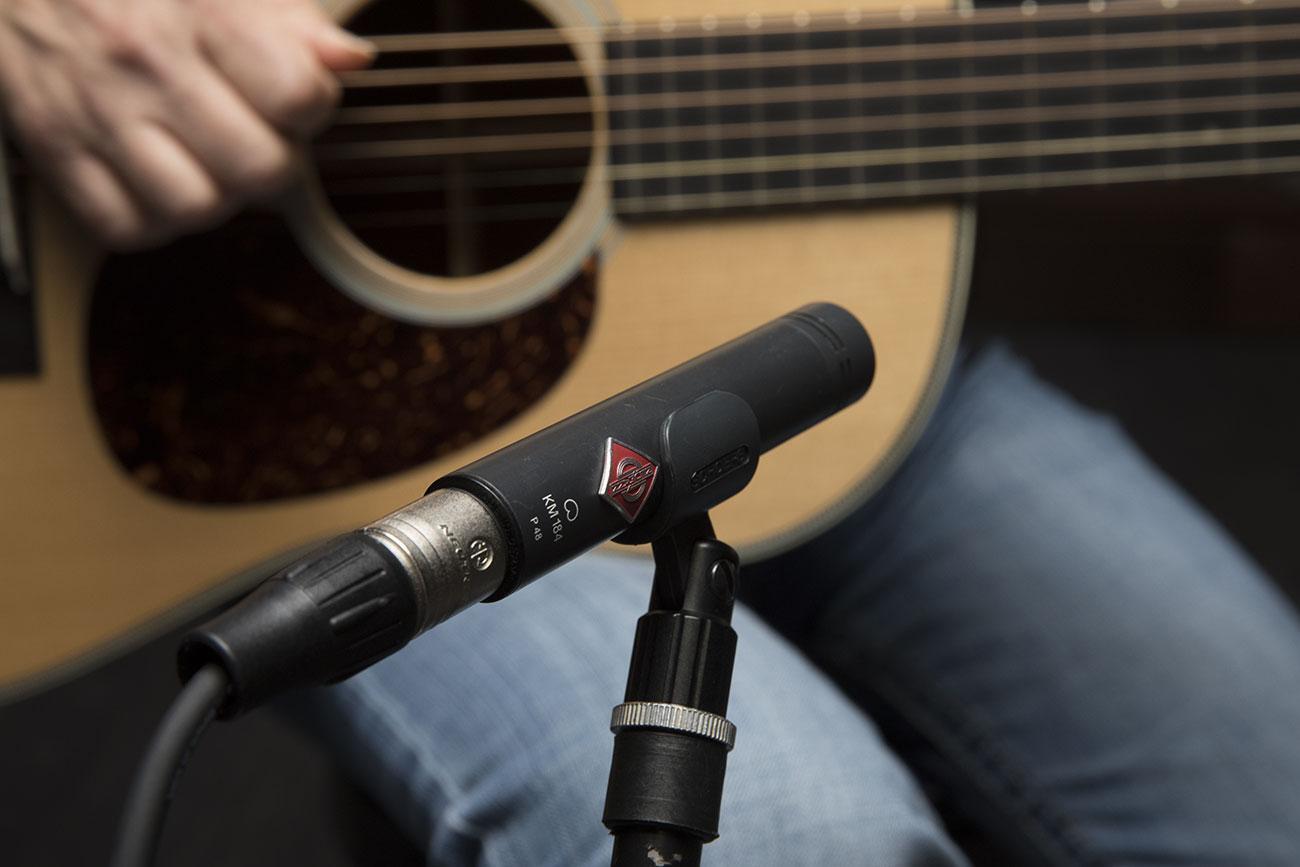
Ed Cherney
(Eric Clapton, Bob Dylan, Rolling Stones, Sting, Bonnie Raitt)
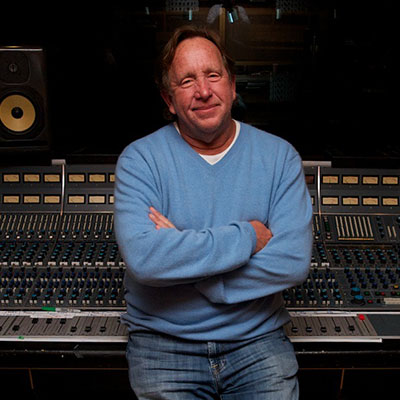
My approach to miking acoustic guitar depends on several things — one factor is what the part’s going to be. Is it a strumming part, a classical sound, is the guitar player live in the room? It all depends on the guitar, the part, and the environment. For a strumming part, I’ll start with a DPA 4011; because I know where it’ll sit in the track, it won’t need a lot of low end, and I can really shape it.
Where to put the mic, that’s a whole other question. I always start by having the musician play. I get my ear down and move around until I find the sweet spot. There will be a spot that doesn’t have a lot of low end and another boomier spot, so I listen for that place where it sounds sweet to me. Sometimes if it’s an experienced player, such as Dean Parks, they know their instrument, have their headphones on, and they can put the mic in a place that’s just right.
The important thing to remember is, if it sounds good, it is good.
Ed Cherney
For a strumming part, I’ll use a single microphone into a Neve pre. In terms of compression, the 1176 was made for acoustic guitars. They add a little something that just makes it better. And with the variable attack and release, I can really shape it to where it’s going to sit in the track and be present without eating up the whole track. The biggest enemy on acoustic guitar is boominess. I want to get the right microphone in the right place before I reach for an equalizer. If I can get the sound I want without pushing in an equalizer, that’s a good day.
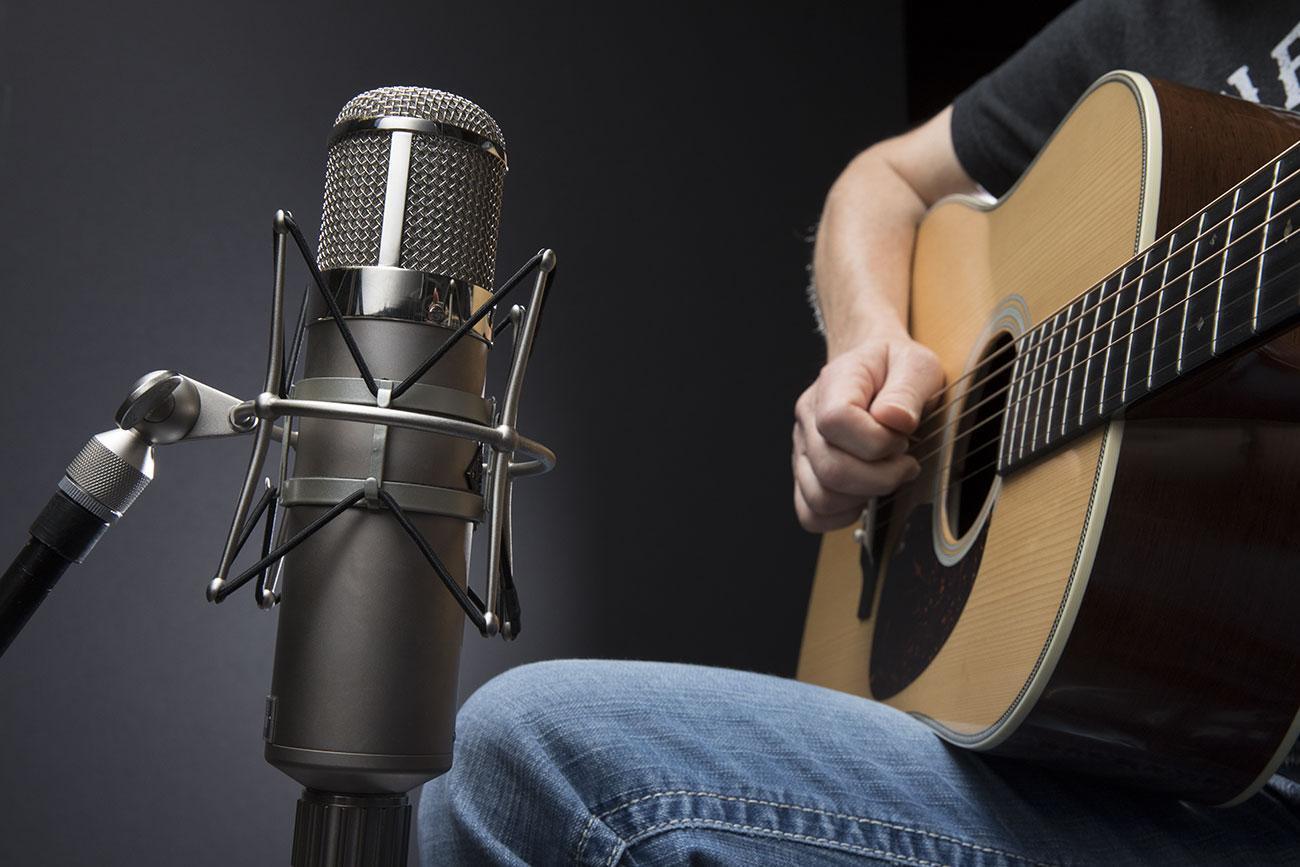
If it’s a classical part or a picking part — some sort of articulated part — I might use a large-diaphragm condenser in addition to a small-diaphragm. If I want a big sound that will stand on its own, I’ll cup my ear with my hand and get in there and find a spot off the bridge where it’s not too boomy and where I think it’ll fit in the track. Just stick your ear in there and find what’s best for the part. Also, if I need it in stereo, sometimes I’ll hook up the guitar’s pickup out plus the mic and put the pickup on one side and the mic on the other. In the track, that gives you a really nice spread and a really interesting harmonic structure.
When I’m doing bluegrass and everybody’s right there in the room where they can hear each other, I’ve been known to use a Shure SM57. The players may look at it and laugh, but I’ve gotten great results when recording in a room with three or four guitar players sitting close together. It works well in a setting where a condenser is going to pick up too much leakage and off-axis information.
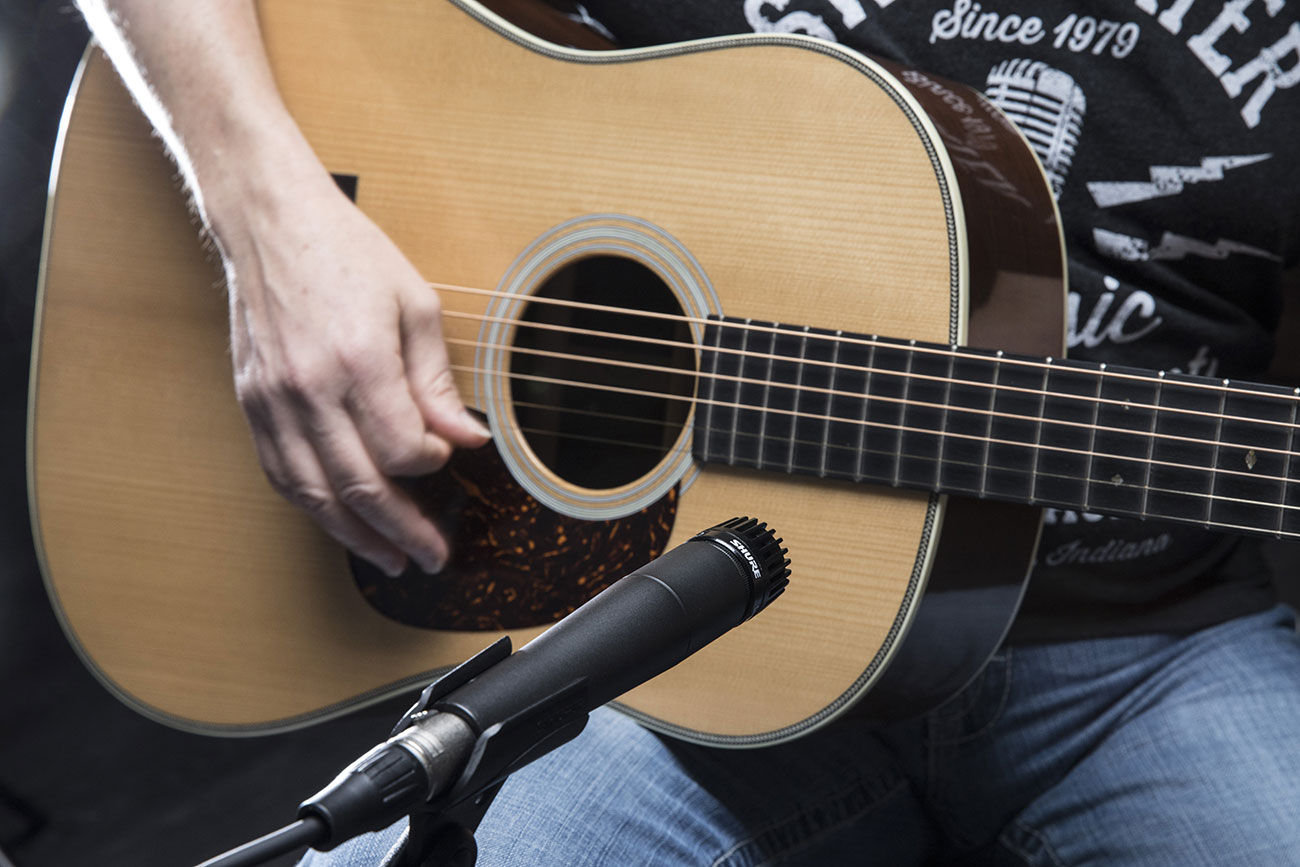
Ross Hogarth
(Van Halen, Keb’ Mo’, Ziggy Marley, John Mellencamp)
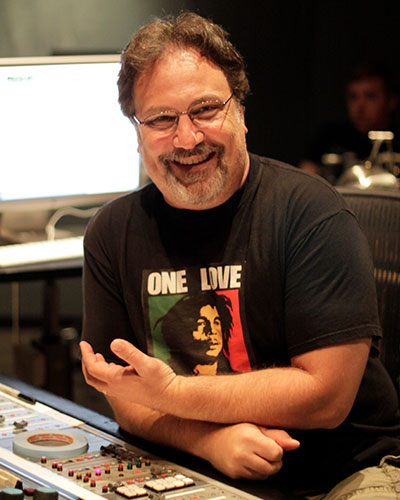
Crafting the right sound on acoustic guitar? It’s completely dependent on the role of the acoustic guitar in the track. If the acoustic guitar is the focus and feature of the song, panned down the middle like a lead vocal or solo instrument, small-diaphragm mics tend to work better for me. I typically want a very detailed, upfront sound, so I start with the mic pointed at about the 12th to 15th fret. Then, in addition to the close mic, I’ll add a pair of omni mics set up in a triangle configuration, left and right equidistant from the close mic to give me distance and ambience. That gives the guitar a three-dimensional sound. I like to use DPA mics with the acoustic pressure equalizer balls that focus the high end a bit more. The distance between the stereo mics and the guitar depends on the room, the instrument, the part. Usually they are 18″–24″ away, unless it’s a super-gentle part where I might need to bring them in closer. The close mic is probably only 2″–4″ away from the strings — really close, unless it’s a big, strummy part.
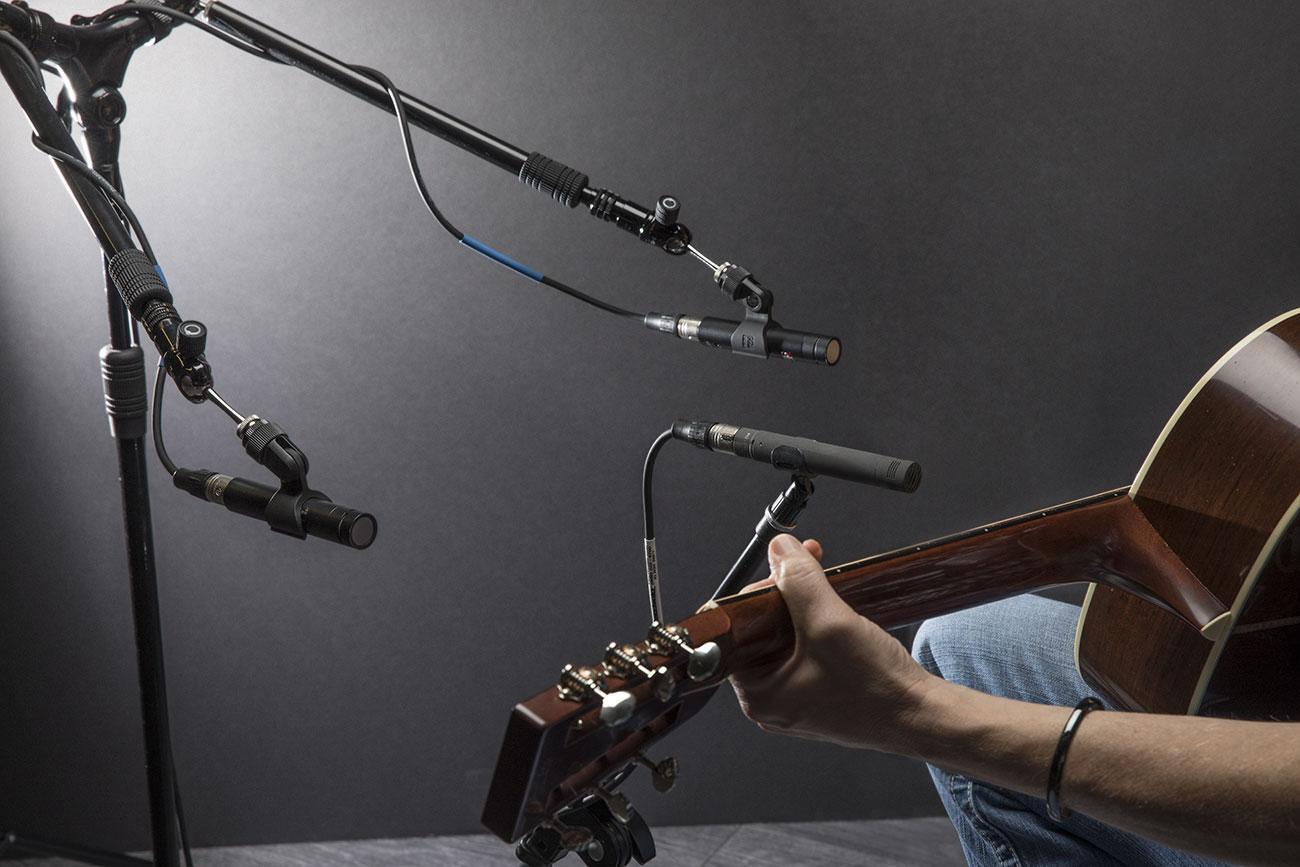
A lot of times in the track the acoustic guitar is performing the function of a percussion instrument, like a tuned shaker. If I’m going for a stereo percussive effect, with lots of pick and not a lot of body, the placement of the microphone is absolutely crucial. The closer you get to the soundhole, the more woof and low end you’ll pick up. Put a small-diaphragm condenser mic right on the soundhole, and you’ll be overwhelmed with low end. If your mic is poorly placed, the mic choice is almost inconsequential.
I really like to hear notes from the acoustic. I’d rather have tone than just percussion. I’m not a huge fan of bright mics on acoustics — anything that pings my ear at 6kHz or so. I just don’t want that competing with my cymbals and other instruments. I’d rather have the guitar be more midrange, more “note” than “scratch.”
The key to me is the song. If the song is super strummy and I’m going to double it, then tailoring the low end is crucial. I think acoustic guitars tend to rock really hard. Some people don’t understand how much acoustics can rock. Look back at rockabilly or any music before electric guitars were really a feature, like back to Pete Townshend and the Who. For that, a large-diaphragm condenser mic moved farther away from the instrument might be the perfect sound, with a little more of the room in play. In terms of LDCs, I like C12s and 251s.
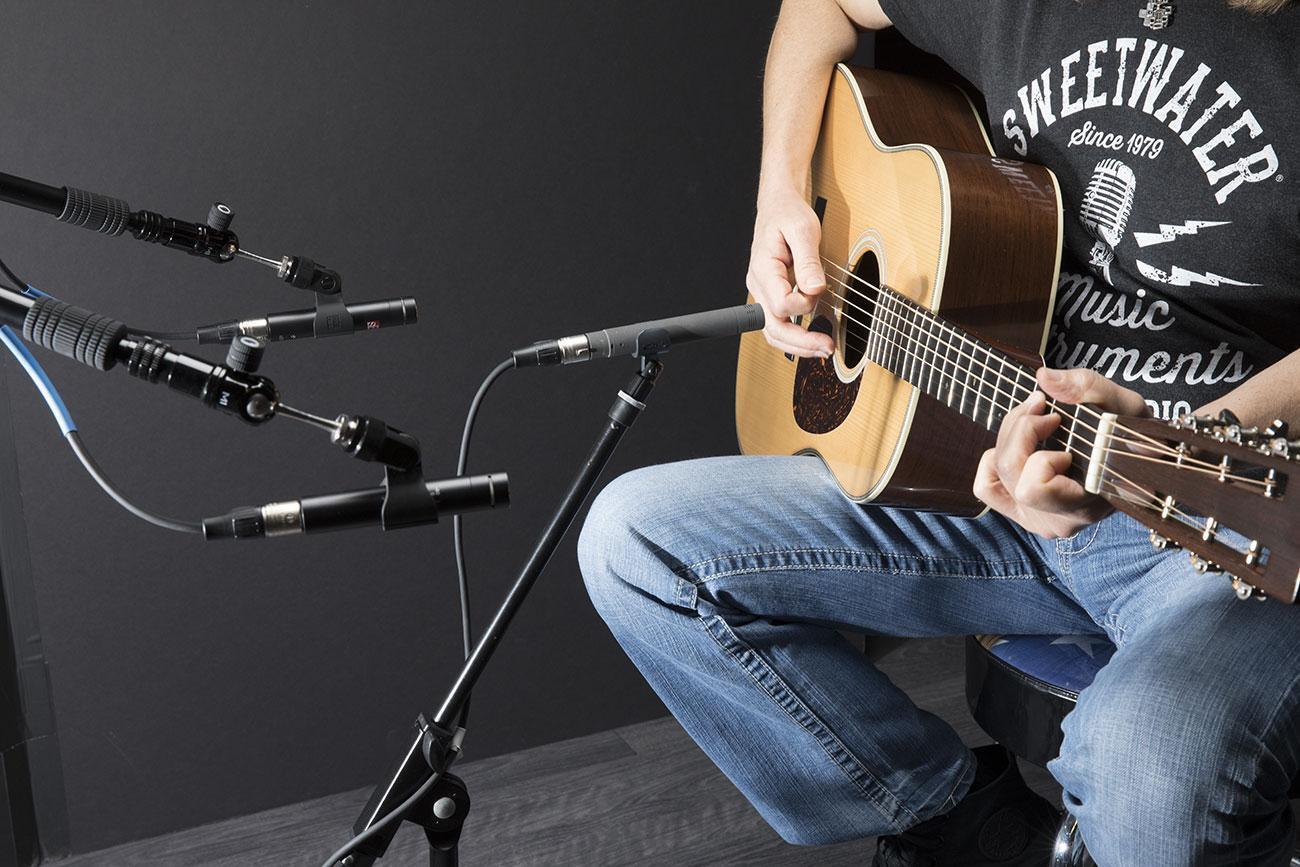
One thing I do occasionally is to put a mic coming over the shoulder of the player on the body side. If you take a large-diaphragm condenser and put it up near the player’s head at ear level, over their right shoulder, then you’re hearing the instrument the way that the player hears the instrument. That mic blended with the close mic or the stereo pair gives a great perspective. If I combine my stereo technique with the over-shoulder mic, it adds a cool ambience, and I don’t have to look for reverb. For acoustic guitar and vocal, this allows the guitar to sort of wrap around the vocal. I do that a lot with Keb’ Mo’. I’ve done it with Jewel and John Fogerty, and it works really well.
One of my new favorite things that I wish I had my whole career is a laser measuring device. I use mine all the time. I’m using it everywhere — drum miking, drum overheads, acoustic guitar, on anything that requires any measurement.
Ross Hogarth
I find that a mic preamp with more pronounced harmonic distortion adds to the musicality and the guitar being noticeable in the track. A specific guitar chain that really works for me nearly every time is the Chandler Germanium preamp because it adds that germanium harmonic distortion, and then I go into the passive EQ in the Chandler TG Channel because I love the frequency selections on it. The mid peaks in the 1, 2, and 3k range — I find those are where the notes are. And then I can roll off some of the bottom, and I can add some top — but only if needed. I don’t usually add top if I’m using the right mic. And then I go into an Empirical Labs Distressor and add a little more harmonic distortion with that Dist 2 setting with the Mid button selected. A certain amount of compression is really crucial to me — a noticeable amount of “not-noticeable” compression, like 3:1 pulling 3–10dB. You don’t hear it as compression — like it’s slammed — but you’d notice if it was gone. This allows me to get a compressed, “present” sound without it being obviously compressed. All those things add up to the acoustic being very present in a track.
I love tracking the acoustic with all of these sonic decisions already made because if it’s not tracked right, it’s just harder to mix. It allows me to build the track in the mix without continuously searching for a plug-in on every session. I prefer to commit to a sound as it goes into the box.


